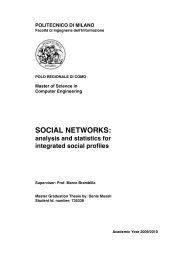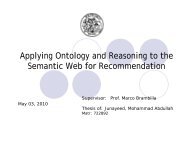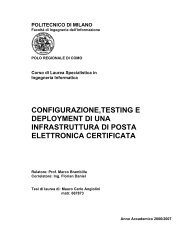Thesis full text (PDF) - Politecnico di Milano
Thesis full text (PDF) - Politecnico di Milano
Thesis full text (PDF) - Politecnico di Milano
Create successful ePaper yourself
Turn your PDF publications into a flip-book with our unique Google optimized e-Paper software.
These patterns do not have side effects on the knowledge base. Whenever it is necessary, we<br />
exploit the UML utility class Complex Query to transfer values from one component to another.<br />
The role of this class is to orchestrate the invocation of the methods in the pattern. Its<br />
configuration determines the methods invocation order (possibly inclu<strong>di</strong>ng looping and<br />
con<strong>di</strong>tional execution), thus eliminating the burden of controlling the flow of components<br />
execution.<br />
3.3.1.1 Class and its classification pattern<br />
This pattern checks the existence of a class in the knowledge base and deducts the hierarchy of<br />
generalizing classes. It encompasses two exploration components (figure 3.25): (i) the Class<br />
Component configured with a ClassOfName selection con<strong>di</strong>tion to retrieve the class<br />
correspon<strong>di</strong>ng to the input, and (ii) the Classes Hierarchy Component configured with a<br />
ClassOfSubClass con<strong>di</strong>tion to deduct the hierarchy above the previous class. The input received<br />
by the user invoking the execute method is transferred to the Class Component; the deducted<br />
class becomes the input for the Class Hierarchy Component, while both the class and the<br />
retrieved hierarchy are returned to the user. The pattern is defined as the one extracting the<br />
specializing class hierarchy for a given input.<br />
This pattern may be used whenever the user needs to analyze a specific class and its generalized<br />
classes.<br />
Figure 3.25: Class and its classification<br />
48


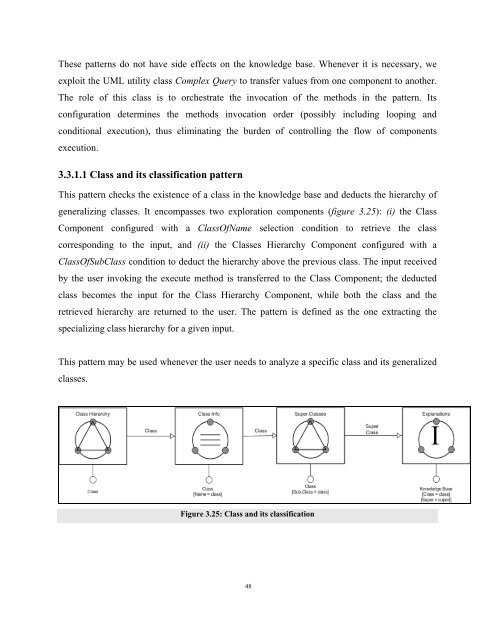
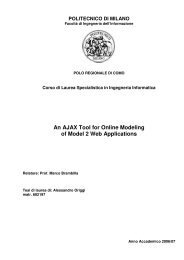
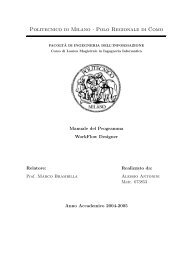
![Full text preview of the chapter [PDF] - Politecnico di Milano](https://img.yumpu.com/44021924/1/180x260/full-text-preview-of-the-chapter-pdf-politecnico-di-milano.jpg?quality=85)
